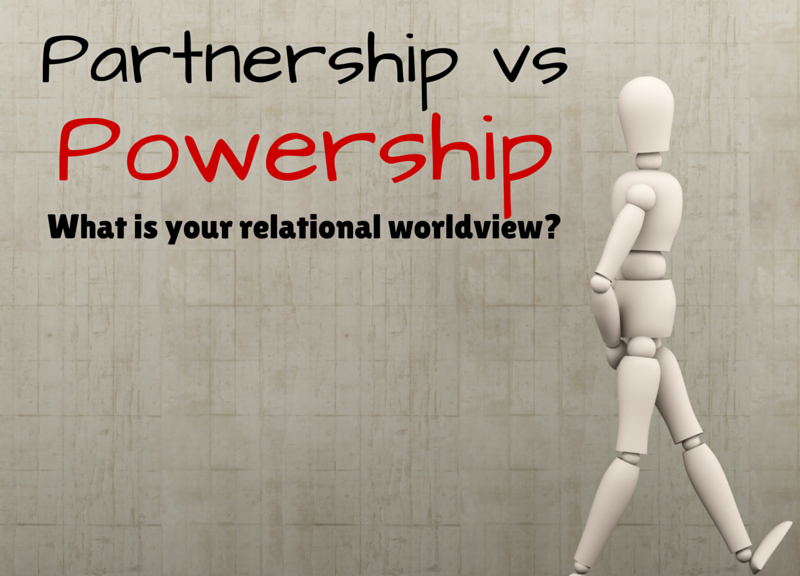Modern psychology has taught us how to identify a controlling relationship. We understand how vital it is to identify controlling relationships because those are the kind of relationships we should avoid at all costs. Right? But why do we always end up in them?
Controlling relationships are the ones that belittle the other person and cause anxiety or self-doubt. The relationship is marked with interactions that are draining and fuel a sense of bewilderment. These relationships begin to feel restrictive, almost suffocating. They become one-sided. These powerships have only winners or losers. Isolation seems to be the only gift these powerships have to offer.
We all seem to have the best intentions when we start a new relationship, yet how do we more often than not end up in powerships rather than partnerships? We all want the same universal things; support, love, acceptance, validation, etc. Yet, when true connection is the objective why do we seem so swept away in all the unhealthy ways of relating to one another?
What is a healthy partnership? How do we achieve a partnership, relationship nirvana, rather than being victims of yet another powership?
Vulnerability Creates Partnerships
Brene Brown, a leading researcher on shame, explains connection is the defining force as to why we are here. She has identified vulnerability in her TedTalk as the only vehicle for connection. Being transparent and emotionally exposed, vulnerable, is how we can be seen by others. Vulnerability is how we can truly be connected with each other. Why is vulnerability so difficult, if we all want and need connection so much?
Vulnerability is authenticity of self. If ever along the way you have learned that your vulnerable, authentic self doesn’t cut it, you have been shamed. In shame, we are forced to confront and wrestle with the demon of fearing we are not worthy of connection. Shame is soul eroding because we associate our sense of worth and self-identity according to the shaming messages we have received in our formative years.
Brown distinguishes the difference between shame and guilt. Shame results in an ‘I am’ statement rather than a guilt statement that is ‘I did.’
Here is an example:
Shame thought: I am a mistake.
Guilt thought: I made a mistake.
The shame thought negatively defines your self-worth and separates you from others. On the other hand, the guilt thought is one we can easily apologize for and remain connected to each other. Once in the shame thought cycle, we are not fit for human consumption Brown humorously highlights.
Three Reactions Connection Can’t Survive
When we are shamed, Brown explains that we react in one of three ways:
1) We disconnect from the other person thus perpetuating the fear of disconnection in the other person which ultimately shames them and continues the shame cycle.
2) We act out in people pleasing behaviors in an attempt to prove to ourselves and our shaming partner that we are worthy of connection and to minimize the fear of not being worthy to connect.
3) We retaliate in shame-based insults and continue in disconnection.
How often have we misnamed the cycle of control in a relationship when in reality it is a cycle of shame. We hold each other captive to the fear of being disconnected through shame not control. Instead of powerships, we are in shameships.
Behavior not Self-Worth
First, we need to understand that when we communicate, we are not commenting on anyone’s self-worth or whether or not they are worthy of love and belonging. What we need to identify is that the person’s behavior was hurtful, not the person. In making this shift, we can remain connected to our partner, lover, friend, yet address hurtful behavior.
When your partner lies to you, what is your reaction? Do you call them a liar and shame them which pushes them farther away from you or do you say, when you did not tell me the truth, that behavior kept us from staying connected? Now the focus is on changing the behavior and not an assault on their worthiness.
By discussing behaviors only, we continue to validate our partner’s worthiness to be connected. They can safely remain vulnerable with us as we work through their destructive or negative behaviors to the relationship. Brown also found in her research that empathy is the antidote to shame. When we express empathy to our partners, by simply saying, “Me too,” Brown says we continue to reaffirm their worthiness for connection and belonging.
How to Stop Shaming and Begin Connecting
Here are three guiding beliefs that if fully embraced and practiced can set us free from the crippling fear of being disconnected and help us grow in life-giving connections with each other:
- Tell your partner or friend, “You are imperfect, but you are worthy of love and connection.”
- Tell yourself, “I believe that I am worthy of love and belonging.”
- Tell everyone, “Love with your whole heart even though there is no guarantee.”
Enjoy your new partnerships with yourself and each other! #igniteyoursoul
